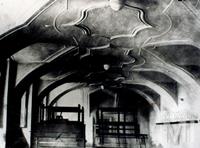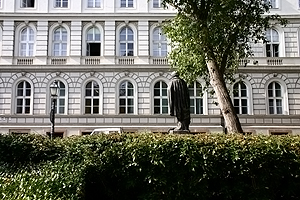
The Photographic Collection of the Institute of Art History of the Hungarian Academy of Sciences is consisted of photographs of Hungarian art objects, artists and buildings without any time and geographic boundaries. The Analog Collection was formed between 1955 and 2003. The Photographic Collection accumulated over half a century ago reflects the research and publishing activities of the institute. The collection currently counts some 80,000 recordings. The online digitized material of the Photobook is available to the general public currently recording about 80,000 hits. The collection has been fully digitalized, please click here for the online catalogue (in Hungarian).
The Photographic Archive collects Hungarian or Hungarian-related photography of artworks, artists, buildings that are significant from art historical point of view without any limitation in time and space. The collection came together from the outcomes of research conducted in our Institute and from the publications, end products of the research, for which publication-quality images were taken in a systematic way, satisfying scholarly needs. Those research projects were: research for the reference book entitled History of Art in Hungary (Magyarországi művészet története) conducted from 1970 and the so called Program of Topography of Historical Monuments (Győr-Sopron-Moson, Fejér, Komárom, Veszprém counties). Photographic Archive's holdings grew greatly through these projects and gained national significance. The task of organization and inventory of the collection placed great responsibility on the heads of the collection, Ágnes Hetényi, Katalin Gellér, Tünde Wehli. However, without the considerable assistance of archivist Mrs Lászlóné Kovács (1920–1988) the duty could not be fulfilled. In the last two decades the collection functioned as a hosting place for emerging young scholars as well. Numerous established and recognized scholars for now (Béla Zsolt Szakács, Zsombor Jékely, Csilla Markója, Kiss János Jernyei, Orsolya Bubryák, Áron Tóth, Krisztina Havasi, Borbála Gulyás) have started their professional career with an internship in the collection. The collection contains about eighty thousand items: mostly B/W negatives, seven thousand color slides, paper copies and a few color negatives. The holdings grew mostly by photos taken by the official photographers of our Institute (Endre Domonkos [1925–1991], Béla Szilárdi, Ferenc Kovács, Gábor Hegyi [1952–1992], Béla Hegede, Vilmos Bertalan, György Makky) and in a smaller measure by gifts (bequests) and by purchase. The earliest prints of the collection that give an overview about the official art of the 50s and 60s are to be mentioned. The prints, gained by Julianna P. Szűcs, from Tibor Gerevich's (1882–1954) bequest concerning the representatives of the so-called Rome school and the Italian art in the interwar period are of high significance. The Photographic Archive also houses prints from Pál Voit's (1909–1988) bequest that were taken for the Topography of Monuments in Heves county. Thanks to Szilvia Maros (1948–1994) the complete holdings of the photography collection of the Corvina Publishing House,by Budapest got into the Photographic Archive in 1992. The art history related prints from the bequests Tibor Gerevich and László Gerevich (1911–1997) were handed over by the Institute for Archeology of Hungarian Academy of Sciences in 2004. The documents of the diocesan fieldtrips (Eger, Kalocsa, Szeged-Csanád, Vác diocese) made between 1991 and 2000 in the framework of the contract with National Center of Catholic Collections are also noteworthy. Researchers may consult different indexes (name, site, images according to sites). The digitization of the whole collection, structured by inventory numbers, initiated by Zsuzsanna Bánóczi (1954–2005) in 1996, is still an ongoing process. Consultation of the collection is made possible by using a simple database based on the book of inventories.




